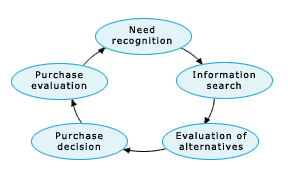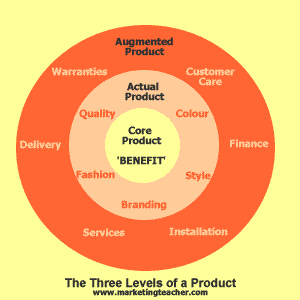To Mr.
LG Electronics Australia Managing Director
Sir,
Sub: Report on launch of the LG Side-by-Side Refrigerator with 15″ LCD TV with remote control in your market.
As requested by your company a formal report on the launch of the above product is enclosed herewith. As you may be aware, the product that is to be launched is unique and has no substitute at present. The combination of two products belonging to two different categories may pose some challenges.
A careful study of the market and a review of relevant literature has been done here in preparing the report. It is possible that some changes may be made if the situation so demands. But it is felt that following the strategy mentioned in the report will make the product a success in the market.
Yours sincerely.
Executive Summary
LG Electronics of Australia is planning to launch its unique product, the LG Side-by-Side Refrigerator with 15″ LCD TV with remote control in the Australian market. The company management has asked for a report formulating the marketing strategy to be followed. This report gives the formal strategy including market segmentation, consumer behaviors, and the product strategy. Being a unique product it is better to be selective in fixing the target customers and the market. The strategy in this report is given based on considering the above factors.
Introduction
LG Electronics, Australia is proposing to launch their innovative product the LG Side-by-Side Refrigerator with 15″ LCD TV with remote control in the Australian market. This report is given according to the request from the company to submit a market strategy for the launch. The methodology for preparing this report includes information from the market and a review of theories by eminent marketing experts and economists.
As mentioned earlier, this is a unique product whereby a combination of refrigerator and LCD TV is brought together. Hence, the strategy, consumer behavior, and product strategy have been evolved keeping these factors in mind. The report for the launch of the product follows.
Market Positioning
Segmentation: For any business organization, marketing is one of the most important functions that it will have to undertake. According to Peter Drucker, the well-known and authoritative economists this is because marketing has only two functions namely marketing and innovation.” (Trout 2006). The combination product that your company is introducing is definitely innovative and hence the second part of the above opinion has already been accomplished.
The next step is to effectively market the product. For this market, segmentation has to be carried out. As every successful manager knows there are four variables that define market segmentation and they are geographic, demographic, psychographic, and behaviouristic. (Brostoff 1994). Geographic segmentation refers to identifying potential markets according to country, region, towns, cities, etc. In Australia, it is better to focus on highly populated areas and the major cities in the country.
The reason for this and also for the next three variables will be made clear in the marketing strategy laid out for the product. Demographic segmentation refers to the factors like age, income, size of the family, etc. Psychographic indicates consumer preferences according to their tastes, lifestyle, beliefs, opinions, etc. Behaviouralistic refers to the perception of a customer as to the potential benefit he gets from buying the product and is not deterred by the price.
Target customers
Since this is a new category of product, it would not be possible to identify the real target customers. But in the case of innovative products, it is better to follow the strategy formulated by Everett Rogers, author of the best-selling book ‘Diffusion of Innovation’ regarding the rate of adoption. He states that acceptance of an innovative product will follow a set pattern. The first 2.5% is by innovators (willing to try out innovative ideas), 13 to 15% by the early adopters (opinion leaders and careful adopters of innovation), 30 to 34% by the early majority (deliberate consideration, never leaders in adapting innovation) and the balance by the laggards (traditional, suspicious, acceptance the only aftermarket has accepted). (Price 2004). A diagrammatic representation from the above book is shown here.

Strategy
It would be ideal to start with the innovators who are bound to be young and wealthy persons and those technically minded. They should ideally be singles who need a well-stocked refrigerator. Since this innovation is ideal for cramped kitchens, selecting places in the countryside will not work since space is not a constraint. In such a case geographically speaking cities would be ideal. Demographically, a wealthy and middle-income group with large families can be focused. Benefit-wise, people who see space as a problem, as well as the innovators who take pride in owning a new product, can be focused.

The ideal space for this product would be for those who are very bothered by space constraints, but also with consideration for innovation. Cost is not too much of a factor here since only those who can afford an LCD TV and a 600-liter double-door refrigerator will go for the product. So only the middle income and the high-income group are shown in the perception map.
Consumer Behaviour
There are five steps and according to some theorists six steps in the consumer decision-making process. Though in many cases a person may buy on the spur of the moment, studies show that consumers generally follow a fixed pattern in buying behavior. The five steps to which the consumer actually buys the product need recognition, information search, evaluation of alternatives, purchase decision, and evaluation of purchase. (McDaniel, Lamb and Hair, 2006). This process can also be graphically shown as follows:

The first step that usually takes place in this scenario may not be beneficial to the product being launched by LG. There would be no one who will need to purchase a refrigerator and a TV (especially an LCD one) at the same time unless they are moving into a new unfurnished home. In most cases, a consumer may independently have the need to buy either a refrigerator or TV. In this case, the company is well advised to have an advertising campaign outlining the benefits of space-saving along with massive product promotion.
But the advantage, in this case, is that once a need has risen, an information search will lead only to one alternative, the LG product. So the step of evaluation of alternatives does not arise. The only recourse available to him is to make the purchase decision. An evaluation of the product is not possible at this stage because of the lack of alternatives. But the consumer can be assured of the quality of the product since it is manufactured by a company of repute.
If the company can get one person belonging to a middle-class family living in a city, social factors may influence similar families to follow suit. This is because the human being is considered to be a social animal and tends to behave in the same way as others of his social class will behave. Culture is not something that is ingrained within a short time. It takes time and includes all that a person begins to see and learn from his childhood onwards. In an advanced society like Australia where consumerism is a part of the culture, a consumer durable like the LG product will be viewed favorably even if the person does not purchase the product. Culture can also include sub-cultures and castes. (Lesson 4: The Major Factors Influencing Buying Behaviour. P.12).
Another factor that can influence buying decisions is psychological factors. “Psychological factors include motivation, perception, skills and knowledge, positions, personality, style of life.” (Stavkova, Stejskal and Toufarova 2008). Both motivation and perception can influence a person to buy an LG product. The feeling of owning a unique product can be a motivating factor for many persons. Perception as to the economy of space can also be a factor here.
The company can make use of these two feelings in promoting the product. The personal factors that influence behavior are age, occupation, economic situation, lifestyle, and personality. (Waller 2006, p.4). In this case, a situation or lifestyle can influence a person to go in for a dual product. That person might find himself in a position where his lifestyle might force him to stay in a place that is not spacious. He will then opt for a dual product that will save him space and money.
Product strategy
It would be difficult to classify this product at a single level. On the one hand, the LG Side-by-Side Refrigerator with 15″ LCD TV is a utility product as a refrigerator and on the other an entertainment product as a television. Broadly speaking the LG product can be classified as consumer durable. According to the marketing expert Philip Kotler, there are three levels in a product. They are the core product, the actual product, and the augmented product. A graphical representation of the model is given below

This model was propounded by Kotler during the 1960s. The concept behind this was that a product was not just something that is tangible, but something with more depth. In other words, a refrigerator is not just a product that you can see and touch. The core level refers to the actual benefit that a product like a refrigerator or TV provides. It is something that is intangible. (Three Levels of a Product. 2008).
With the LG product, the benefit is twofold, something no other competitor can provide at the moment. It provides a space for storage and preservation of food products on one hand as well as provide a means of entertainment and information. It is to the credit of the company that they have brought together two seemingly unrelated fields together in the name of space utility. The actual product is simple to explain, a refrigerator and a TV with all its model specifications including capacity, color, style, branding, etc. augmented level refers to the added value given to the product by the company like after-sales service, warranties, finance, etc. LG Australia should formulate a proper strategy regarding this area.
Conclusion
A formal report for the launch of the LG Side-by-Side Refrigerator with 15″ LCD TV with remote control has been presented here. The product is a unique one in the sense that no other company has launched a refrigerator to which an LCD TV has been attached. So it would be difficult to compare the product with other brands. But market research has shown that buying the products separately would be cheaper. Hence this product can only be targeted at the particular market segments mentioned in the report. This was also the reason why the strategy created by Everett Rogers was adopted. It is advised that the company stick to this policy and see how the market develops.
Bibliography
TROUT, Jack. (2006). Tales from the Management Wars: Peter Drucker on Marketing. Forbes. Web.
BROSTOFF, Mark J. (1994). Target Marketing and Direct Mail: A Smart Campaign Combination: Segmenting Consumer Markets. Camping Magazine. BNet. Web.
PRICE, Robert W. (2004). Roadmap to Entrepreneurial Success: The Commoditization of Disruptive Information Technologies. A1 Books Co. P. 40. Web.
McDaniel, Carl D., LAMB, Charles W., and HAIR, Joseph F. (2006). Introduction to Marketing: Consumer Decision Making Process. Thomson South Western. P. 152. Web.
OLSEN, Henrik. (2003). Supporting Customer’s Decision Making Process. The Interaction Designer’s Coffee Bank. Guuui. Web.
Lesson 4: The Major Factors Influencing Buying Behaviour: Cultural Factors. Rai University. P. 12. Web.
STAVKOVA, J., STEJSKAL, L., and TOUFAROVA, Z. (2008). Factors Influencing Consumer Behaviour: Psychological Factors. Agric. Econ – Czech, 54, P. 277. Web.
WALLER, Chris. (2006). Consumer Behaviour: Factors Influencing Consumer Behaviour. University of Ottawa. P. 4. Web.
Three Levels of a Product. (2008). Marketing Teacher. Web.
